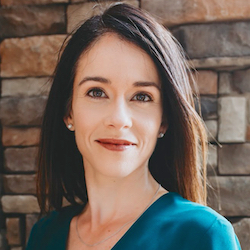
Successful business leaders always are looking for new ways to keep pace with the ever-changing market. The senior living industry is no exception, but I recently was reminded of blind spots that senior living professionals may have regarding prospective residents and the sales methods used to familiarize them with communities.
I had the chance to join a friend as she shopped around some of the industry’s most-recognized brands for her mother. What I expected to be an ordinary day became an eye-opening exercise in how our customers’ needs and values have shifted over time.
Two things about potential residents:
- They arrive informed. Today’s senior living prospects are infinitely more knowledgeable and savvy than that of 10 or 15 years ago. After extensive research, including reading online reviews and sometimes even consulting with professionals, they visit a community ready to fill in the information gaps.
- Time is of the essence. Similarly, many people today have allotted only 20 to 30 minutes for tours and visits — when our scripted tours are meant for two hours. They often have other appointments scheduled on that same day. Because they’re already coming in well-informed, many are on a mission to get the answers they need.
Of course, all of these points run counter to the standard sales model that has been a fixture in senior living for more than a decade. For instance, starting out as a community sales manager in the early 2000s, I was directed to spend as much time as possible with customers, offering a leisurely tour, redirecting attention to our newest amenities and avoiding divulging the price until it was time to close the deal. Today, this method is outdated.
During my undercover shops, however, I experienced firsthand just how off-putting these sales methods could be. Not only were they missing the mark, they risked driving people away.
Here’s why:
- Scripted sentimentality. Initiation conversations seemed impersonal and responses calculated, even when discussing something as emotionally delicate as a serious health condition. Revealing that a parent recently received a diagnosis of a terminal illness evoked questions about disease progression, standards of care and financial stability. Meanwhile, many times, the parent’s name was never even requested.
- Hiding the price. A standard feature of every visit was the refusal to disclose or even discuss price until we were shown the apartment. We couldn’t even get ballpark estimates ahead of time. Inquires about prices were met with probing financial questions that felt like a shell game.
- Strictly selling services. Considerable effort was spent on showcasing daunting lists of the latest services, amenities, conveniences, and perks — many of which are not only standard in the industry, but also are available elsewhere or through home-based care. Moreover, transportation services, healthy meals, social activities and exercise classes just don’t carry as much weight in the age of Grubhub, Uber, Facetime and Fitbit.
Yes, changes in the marketplace call for an updated approach, but we need not overthink our sales model. A few simple fixes can help ensure that we stay in touch with our audience while staying true to core values:
- Offer a personal touch. Quality interpersonal connection is far superior to hours of prepared responses and one-sided small talk. For many residents, initial visits are emotionally taxing and involve facing difficult realities. These conversations cannot be forced. Making a genuine effort to reciprocate and connecting on a human level ultimately will only strengthen your sales pitch.
- Lead with respect. Be upfront and transparent. Give your sales team room to breathe, and trust their instincts instead of asking them to stick with a prescribed formula. Respect your prospect’s time, budget, values and concerns. You’ll not only win their trust and admiration; you’ll win referrals as well.
- The community is the commodity. If you strip away all the amenities and conveniences your senior living community has to offer, there’s one thing that’s even more precious than it was a decade ago: real community. When people become senior living residents, they join a micro-society where life stories can be shared, hidden talents rediscovered and feelings of purpose renewed. Build those experiences into each visit, along with all the sights, sounds and tastes of daily life in your community.
The first step in fixing a blind spot is seeing it for yourself. If there’s one thing I’ve learned from my experience, it’s that our industry needs better consumer insights.
So, before embarking on your next review, strategy session or capital-planning discussion, consider going on a few good old-fashioned undercover shops. Not only will a fresh perspective help shed light on needed improvements, it also may remind you of what makes your community so unique and special to begin with.
Lindsay Casillas is senior vice president of sales and business development at Sodexo Seniors, a global Fortune 500 company offering services designed improve quality of life via dining, housekeeping, facilities management and maintenance.
McKnight’s Senior Living welcomes marketplace columns on subjects of value to the industry. Please see our submission guidelines for more information.




